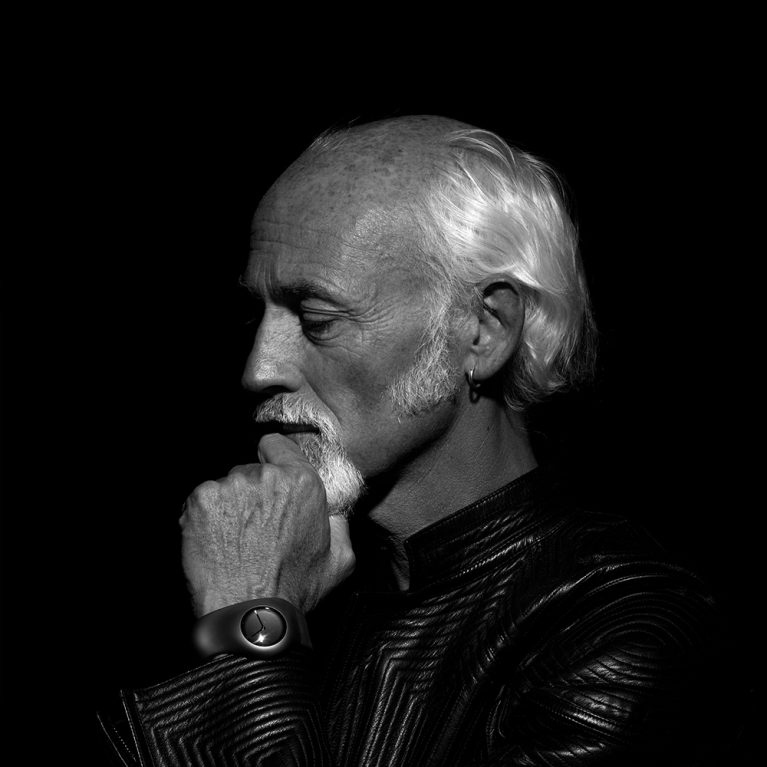interviews
Ross Lovegrove’s Milan
I first started engaging with the city when I began working with Milan-based manufacturers in 1990...

What are the origins of your relationship with Milan?
I first started engaging with the city when I began working with Milan-based manufacturers in 1990. Cappelini, Driade, Zanotta and Luceplan were my first clients and they gave me an opportunity to discover not only the centre of the city but also its extended industrial boundaries, industrial architecture and culture of making. I can’t say my relationship with the city is related to any specific place. In fact it’s strange that after so many years I still don’t feel like I know the city or I’m integrated with it. Maybe it’s because I like to be anonymous there. But at the same time this always leaves me a lot to discover or rediscover. In every city from New York to Tokyo, I enjoy the company of friends there who introduce me to places they relate to in a personal way.
What is your favourite historical building in the city?
The Sforza Castle right in the heart of Milan is incredible and so powerful as a mass of stone [Monumental Milan]. The brickwork is like a piece of computational sculpture and it’s a link to the historical past of Milan that was so interesting.
What do you normally do when you are in Milan?
When I’m visiting the city, I mostly stroll and drift because it’s so small you can’t really get lost. I don’t gravitate towards money or fashion, and any old bar is fine with me. As I said, I tend to let local friends decide where to go or meet. Despite its traffic, Milan is a walking city so there’s never any fear in just wandering around. But it’s a city divided by money and luxury versus academia and youth. The most interesting areas are always where there’s a dynamic of raw ground-up possibility not in the realm of the establishment. Milan would do well to open up more to these possibilities, as young people initiate new design ideas across three-dimensional design, self-manufacturing and fashion. Italy has an incredible support structure for making things. All you need is the economic support.
Is there a shop in Milan where you buy special items?
I don’t shop but I do love art. My favourite Milanese galleries are Massimo De Carlo and Lia Rumma [The Polycentric Centre], but the Mudec Museum of Cultures [A Stroll for Flaneurs] is also becoming a real destination because it seems to have a rare but very international perspective on exhibitions. Meanwhile, the new Lisson Gallery on Via Bernardino Zenale breaks the provincial introversion of Milanese galleries and brings something needed to the city.
What is your favourite cafe, bar or restaurant in the city?
I think it’s terrible to be a food snob when most people don’t get access to food in the world, so I’m quite happy at the Trattoria Torre di Pisa eating a Milanese costoletta cutlet knowing that Ettore Sottsass used it as his dining room.
Which new buildings have transformed the face of Milan?
It’s a pity that Zaha’s new CityLife [The Polycentric Centre] Milano apartments are totally unaffordable to the people who might appreciate them! But I think generally there aren’t enough subsidised experimental but affordable live-work spaces in the city for young people.
What would you transfer to Milan from another place?
I think Milan would benefit from some fantastic public sculptures, a hyper-modern electric tram system, and social communal energy to filter air and illuminate the city. Furthermore, since art is the new shared religion, there should be a much greater dynamic for art installations as Milan has beautiful outdoor spaces for this. For example, I saw the Tony Cragg exhibition on the rooftop terraces of the Duomo [Monumental Milan] last year and it was incredible.
The reaction from tourists was really intense, too.
It would be so energising to have something similar to a Serpentine Gallery Project in the parks that could regenerate Italian architecture and promote a modern dialogue with the establishment. But lastly, what’s the point of talking about beauty and culture if the atmospheric pollution is so invasive? Milan is infested with cars, and this problem could be relieved by government investment in a fantastically modern, safe and ecological transport network. That would democratically transform a city like Milan. Italy has so much marble, too, so you could cover large communal spaces in it to clean up the city, reflect light and take away the industrial grey that is de-inspiring. Healthy, wealthy and wise!


